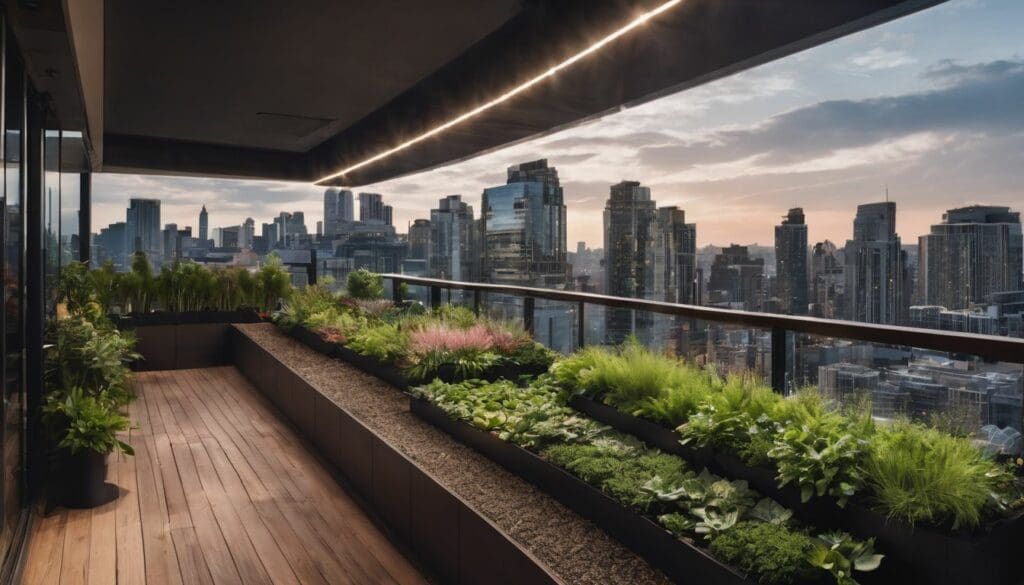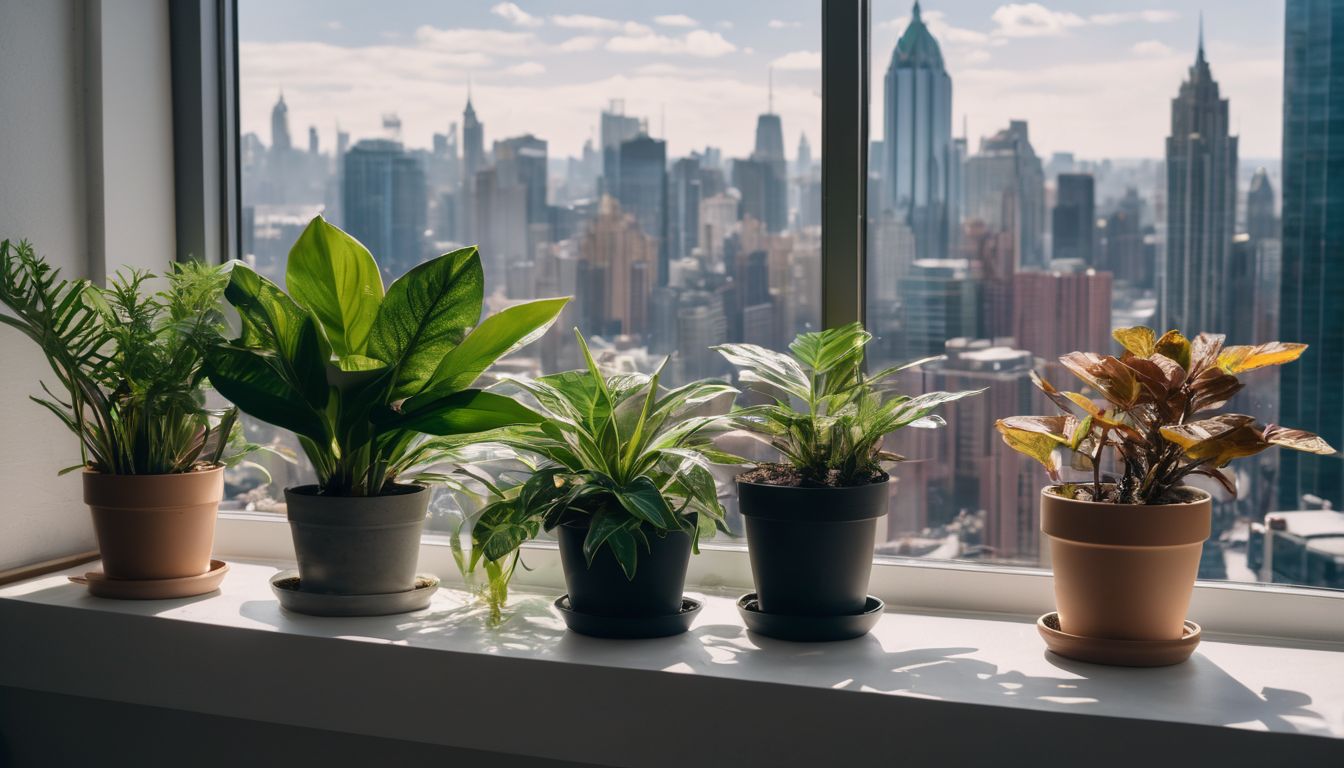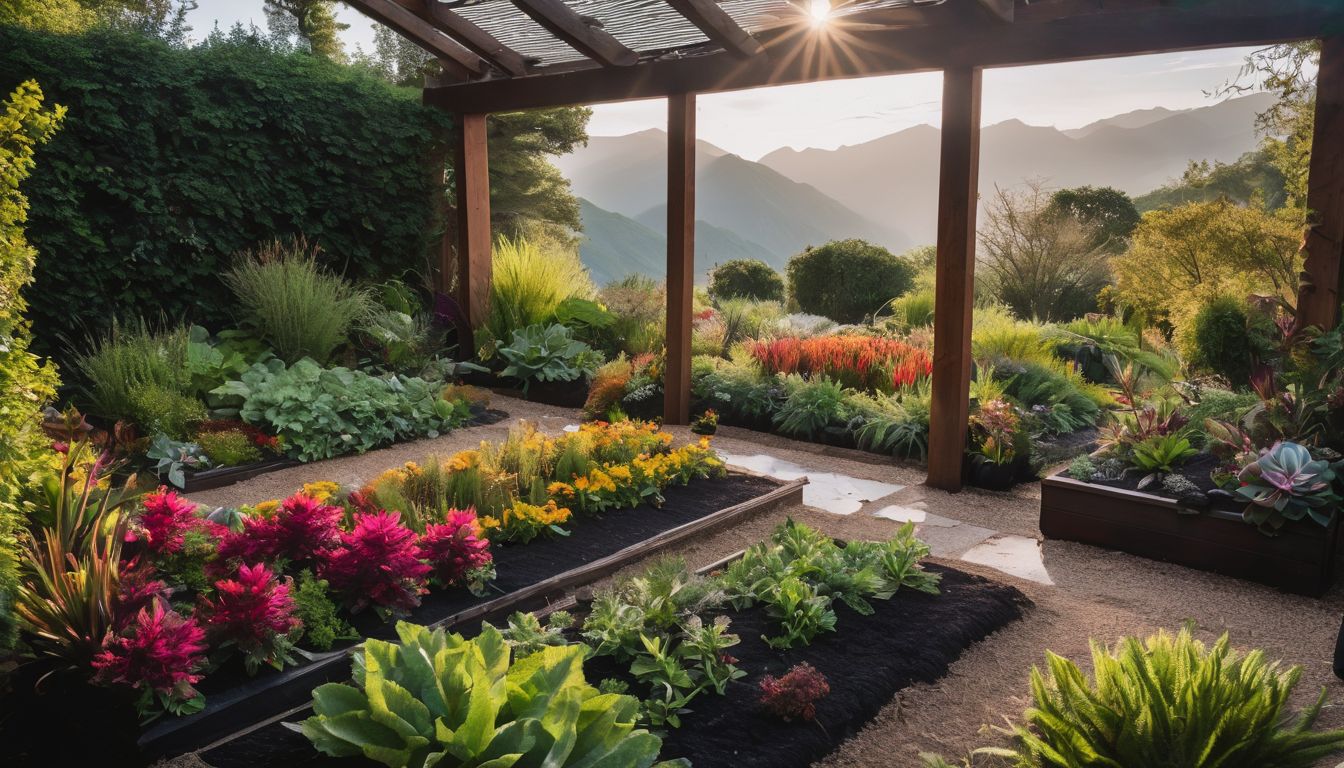Space is a precious commodity in the bustle of city life, often leaving little room for greenery. Urban gardening is on the rise, with innovative solutions allowing city dwellers to cultivate plants in compact areas.
Our blog will guide you through transforming your limited outdoor space into a thriving garden oasis. Dive in and let’s grow together!
Key Takeaways
- Urban gardens offer innovative solutions such as container, vertical, and micro gardening to grow plants in compact city spaces.
- Selecting the right plants and understanding soil depth requirements are crucial for maximising yields in small-scale urban gardens.
- Companion planting is a strategic method that improves plant growth and pest control without needing chemicals.
- Sustainability practices like using eco-friendly materials, composting, and conserving water reduce the environmental impact of urban gardening.
- Careful maintenance including watering, weeding, pruning and soil amending ensures healthy plant development in urban gardens.
Types of Urban Gardens
Urban gardens come in various forms, including container gardens, vertical gardens and micro gardens. Each type offers unique benefits for those looking to maximize limited space for their greenery.
Container Gardens
Container gardens are an excellent solution for those with limited space. They allow urban gardeners to cultivate a variety of plants such as herbs, vegetables, and flowers in small areas like balconies or patios.
Using sustainable materials is key when creating container gardens; using recycled or upcycled containers reduces waste while adding a unique touch to the garden. Incorporating compact plant varieties helps maximize the use of space, allowing for bountiful harvests from even the tiniest areas.
To ensure successful container gardening, consider utilizing companion planting techniques that promote symbiotic relationships between different plants and increase overall yield.
Vertical Gardens
Vertical gardens are an excellent solution for those with limited space in urban environments. These gardens make use of vertical surfaces, such as walls or fences, to grow a variety of plants.
By utilising this technique, individuals can effectively maximise their growing area without the need for expansive land. Vertical gardening techniques also offer environmental benefits by reducing heat absorption and providing insulation.
To create a thriving vertical garden, it is essential to consider factors such as sunlight exposure, plant selection, and irrigation methods. With careful planning and maintenance, urban dwellers can enjoy lush greenery while contributing to sustainable gardening practices in their communities.
Micro Gardens
Transitioning from vertical gardens to micro gardens, these tiny but efficient growing spaces are perfect for those with extremely limited space. Micro gardens can be created in small containers, window sills, or even on a countertop.
Using innovative techniques such as hydroponics or aquaponics, urban gardeners can grow herbs, vegetables, and even some fruits in these compact environments. By maximizing every inch of available space and utilizing sustainable materials and water conservation methods, micro gardens allow environmentally conscious individuals to contribute to urban agriculture while supporting conservation efforts.
Maximizing Yield in Limited Spaces
To maximize yield in limited spaces, urban gardeners should carefully choose plants that thrive in small areas and understand the minimum soil depth required for successful growth.
Utilizing companion planting can also help to make the most of available space.
Understanding Minimum Soil Depth
When choosing the right plants for your urban garden, it’s essential to understand the minimum soil depth required for optimal growth. Different plants have varying root systems that dictate the necessary depth of soil for healthy development.
Understanding this factor allows you to select suitable plants that can thrive in limited soil depths, maximizing your small gardening space effectively.
To support abundant growth in restricted spaces, consider plants with shallow root systems such as lettuce, radishes, and herbs. These varieties require minimal soil depth and are perfect choices for micro gardens or container gardening.
Utilizing Companion Planting
To maximize plant growth in limited spaces, utilizing companion planting is a strategic approach. This method involves planting compatible crops together to enhance each other’s growth and deter pests.
For instance, planting basil alongside tomatoes can improve the flavor of the tomatoes while deterring pests that commonly affect tomato plants.
Furthermore, pairing marigolds with vegetables like cucumbers or squash can help repel harmful nematodes and insects. By integrating companion planting into urban gardening practices, individuals can naturally promote healthier plant growth and reduce the need for chemical pesticides or fertilizers.
Sustainability in Urban Gardening
In urban gardening, sustainability is key. Using sustainable materials, composting, and water conservation practices are essential for minimising the environmental impact of small scale gardening in limited spaces.
Embracing these principles can lead to a greener lifestyle and contribute to a healthier environment for all.
Using Sustainable Materials
To build a sustainable urban garden, choose eco-friendly materials like recycled containers or natural wood for raised beds. By repurposing items such as old buckets or pallets, you reduce waste and minimize your environmental impact.
Opt for organic soil and fertilizers to promote healthy plant growth while keeping chemicals out of the equation.
Utilize rain barrels to collect water for your garden, reducing reliance on municipal water sources. Upcycling household items into functional gardening tools also contributes to sustainability by reducing overall consumption.
Composting
By reusing organic waste, composting is a sustainable way to enrich the soil for urban gardening. It helps reduce the amount of waste that ends up in landfills and also lessens greenhouse gas emissions.
Composting can be done using kitchen scraps, yard trimmings, and other biodegradable materials such as leaves and paper. The process involves layering organic matter, keeping it moist, and turning it regularly to accelerate decomposition.
This results in nutrient-rich compost that can be used to nourish plants while promoting healthy soil structure.
Wrapping Up
Maximizing small spaces in urban gardening is achievable with the right tools and techniques, so read on to discover how you can make the most of your limited space and embrace a greener lifestyle.
5 Tips for Maximizing Small Spaces in Urban Gardening
Choose plants that thrive in small spaces, such as herbs, cherry tomatoes, or bush beans. Utilise vertical space by growing climbing plants like cucumbers or peas on trellises. Consider staggered planting to maximise the use of available space and increase overall yield.
Implement raised bed gardening techniques to make the most of limited ground area. Use compact varieties for small spaces and grow plants closely together without overcrowding them.
By employing these strategies, you can enjoy a flourishing urban garden even with minimal space at your disposal!
Importance of Care and Maintenance
After implementing the 5 tips for maximising small spaces in urban gardening, it becomes crucial to understand the importance of care and maintenance. Proper care is essential for the health and vitality of your urban garden.
Regular watering, weeding, pruning, and monitoring for pests are vital tasks to ensure your plants thrive. Maintenance also involves regular soil testing and amending to provide adequate nutrients for plant growth.
In addition to these basic tasks, it’s important to keep an eye on plant diseases and address them promptly using environmentally friendly methods. Neglecting care and maintenance can lead to stunted growth or even loss of crops due to preventable issues.
Embracing Urban Gardening for a Greener Lifestyle
Urban gardening offers a sustainable way to embrace a greener lifestyle, even in limited urban spaces. By growing fruits, vegetables, and herbs on rooftops, balconies, or in community gardens, individuals can contribute to local food production while reducing their carbon footprint.
Through small-space gardening techniques such as vertical gardens and container gardens, it’s possible to maximise plant growth and create lush greenery even within the confines of city living.
With edible landscaping becoming increasingly popular and the rise of urban farming initiatives, there’s no better time to join the movement towards sustainability through urban gardening.
Conclusion
In conclusion, small space gardening offers a sustainable solution for urban dwellers. Embracing this lifestyle contributes to a greener environment. By optimising minimal areas with the right tools and techniques, anyone can enjoy the benefits of urban gardening.
It’s all about maximising plant growth in limited spaces while supporting conservation efforts. With a little care and creativity, anyone can turn their balcony or rooftop into a thriving green oasis.
FAQs
1. What is urban gardening for small spaces?
Urban gardening for small spaces involves growing plants in limited areas like balconies or rooftops, making the most of every inch to maximise plant growth.
2. How can I start a garden if I only have a tiny balcony?
To start a garden on a tiny balcony, use containers and vertical structures to grow your plants upwards, saving space while still enjoying greenery.
3. Can rooftop gardens really work in an urban setting?
Yes, rooftop gardens are ideal for urban settings as they utilise unused overhead space effectively and can even help cool buildings below them.
4. Do you have any tips for maximising growth in my small garden area?
For maximising growth, choose plants that thrive in confined spaces, use high-quality soil enriched with nutrients, and ensure your plants get adequate sunlight and water.





